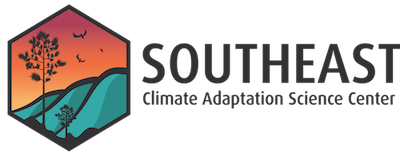Best Practices for Project Design: Effectively Addressing Natural Resource Management Needs

Project Information
Principal Investigator: Paul R. Armsworth, Department of Ecology and Evolutionary Biology, University of Tennessee – Knoxville
Proposed Project Completion: This project is complete
Implements Science Plan Theme: Adaptation
Project Cooperators: Karen McNeal (Auburn U.), Mitch Eaton (USGS SE Climate Adaptation Science Center), Cari Furiness (NC State U.), Lalasia Bialic-Murphy (U. Tennessee – Knoxville)
Overview
To design research projects that address the information needs of natural resource managers, we need to learn lessons from past projects that tried to do this. We developed an evaluation approach to assess how effective research projects had been at meeting the needs of natural resource managers. We applied our approach to projects funded by the Southeast Climate Adaptation Science Center and looked for characteristics shared by projects that were more effective at meeting the needs of managers.
We developed a new survey instrument for evaluating the usefulness of research projects to stakeholders. We surveyed PIs involved in projects funded by SE CASC, their stakeholder partners, and the center’s leadership about how effectively different projects engaged and met the needs of stakeholders. We analyzed the results using a suite of statistical tests.
A key outcome from our project is the survey instrument itself. In addition, our project provides insights into approaches that had proven effective in past SE CASC projects for engaging managers. We found that uses of project by managers included both intangible uses (e.g., the project influenced the manager’s professional network or impacted their knowledge relevant to their job) and more tangible use (e.g., the project influenced decisions to change how time, money, or labor were spent in the manager’s organization). The path to academic impact was wholly separate to the path through which projects saw greater use by managers. The clearest indicator of whether managers found a project to be useful was simply how often the managers talked with the project team.
Our results can be used by SE CASC and other centers to inform the design of future projects, while the survey instrument we developed can then be used to evaluate their effectiveness for engaging managers.
